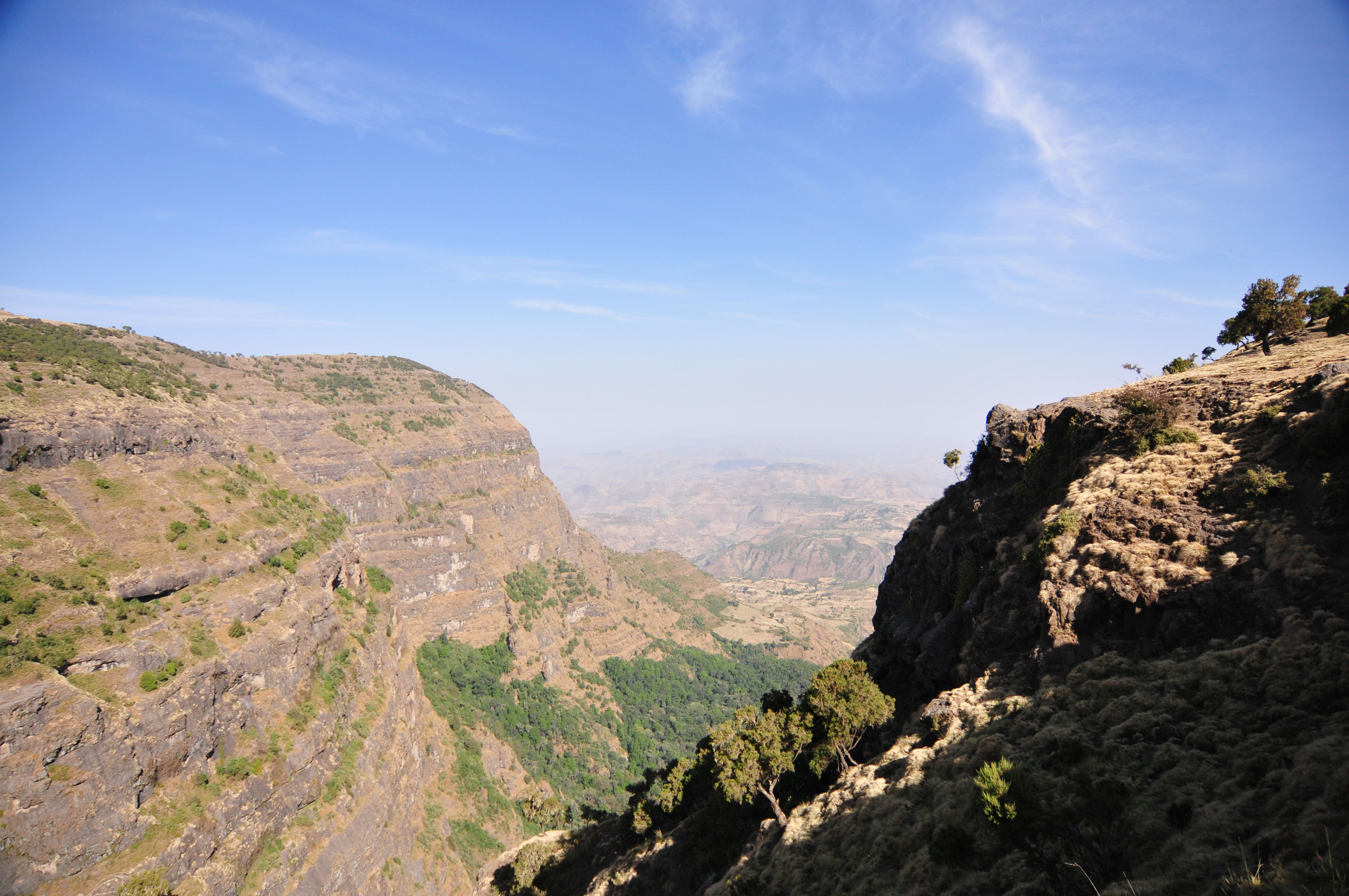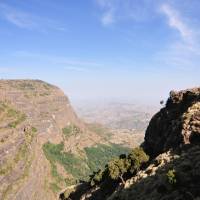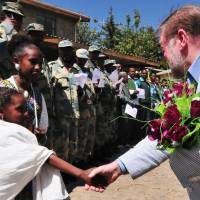On Saturday, Jan. 18, I set foot in Addis Ababa for the first time since I left Ethiopia in late October 1969.
I was with Kentaro Fukuchi, a staff member of our Afan Woodland Trust in Nagano Prefecture, and we were met at the airport by government officials and escorted into the VIP lounge to be greeted by the former director general of the Ethiopia Wildlife Conservation Authority, Ato Ewnetu Bilata Debeta, who visited us at our trust in Kurohime last summer. He had just recently been promoted to state minister in charge of communications.
Reporters, a television crew and various other dignitaries were also there — along with two beautiful ladies in national dress who presented me with a bunch of flowers.
All that was very different from the first time I went to Ethiopia, 47 years ago, after being selected by the government of His Imperial Majesty Haile Selassie I ( Conquering Lion of the Tribe of Judah, King of Kings of Ethiopia, Elect of God) to become the first game warden of the proposed Simien Mountain National Park.
The park was finally gazetted in 1969, but a few months later I resigned, my heart and soul hurt and weary of corruption, broken promises, lack of support and funds — and the continued destruction of lowland forest aided and abetted by high officials whose job it was to help us bring the national park into being.
I didn't mind the fighting, the long and sometimes dangerous patrols to chase after and arrest poachers, forest-cutters and others burning woodlands for pasture, but I did mind that they all walked free soon after we handed them over to the police. The district governor was deeply involved with subterfuge to create and claim more farmland by cutting down virgin forest. The judge took bribes. Both these gentlemen and many other of the reprobates I had to deal with have since died. There are new and idealistic officials in charge.
The 220-sq.-km Simien Mountains National Park is the most spectacular in Africa, and tourist numbers are steadily rising. However, despite it becoming a UNESCO World Heritage Site in 1978, in 1996 the same body also placed it on its List of World Heritage in Danger. So, with the park's World Heritage status in danger of being revoked, I — as the very first warden, and the one who actually set out its boundaries — had been invited back to give advice. Kentaro and I were traveling under the auspices of the Japan International Co-operation Agency (JICA) and Hokkaido University.
We arrived in the dry season, which lasts from October to May, but even so I was deeply shocked by the loss of indigenous forest — by my estimates at least 80 percent has been destroyed since I left. The ensuing erosion has cost the park area, and its flora and fauna, the loss of dozens of dry-season springs and streams.
The Simien is famous for its towering escarpment, some 65 km long, with sheer drops of more than 1,000 meters. Even in the dry season, with no rain at all, warm air rising and cooling would precipitate dew on the flowers, leaves and the long, gray-green growths of maidenhair moss (aka old-man's beard).
Indeed, when I was the warden and in the habit of taking early morning walks under the canopy of the Afro-alpine woods on the slopes above the escarpment, my uniform would get soaking wet from that pure cool moisture as it dripped down and soaked into the rich soil until the sun rose higher. Consequently, the ground beneath the trees was rich with wild thyme, ferns, myriad grasses and other plants.
For the two years I lived in the mountains with my Ethiopian assistant and 20 rangers. We fought off poachers and forest-cutters in those upland areas that were the grazing grounds of Walia ibex, which are unique to the Simien, and also of small antelopes called Dik-diks and their larger cousins, Klipspringers and Bushbucks. To protect those and other wild creatures' habitat, we also strictly forbade the grazing of sheep, goats, cattle, donkeys, mules and horses.
Back then, the Simien was famous for the honey that bees made from the nectar of its flowering giant heathers, its St. John's Wort trees with their lovely yellow blooms, Hagenia trees (also a native cure for tapeworm), wild roses, jasmine and the profusion of flowering herbs in the undergrowth.
Now the rangers do nothing about the grazing of domestic animals, and very little about the cutting of those ancient trees for fuel. This neglect has caused the undergrowth to be razed to bare ground or reduced to patchy low growth of only a couple of millimeters. With hardly any canopy left, there is little shade between the trees and I found no seedlings, saplings or young trees — which spells sure disaster.
When I was the warden, the Simien's alpine forests were gorgeous and fragrant, home to bees, butterflies, dragonflies, mayflies and other insects, along with all kinds of birds and — in crystal-clear streams that flowed to deep valleys or made ribbons of silver waterfalls off the cliffs — there were tadpoles and freshwater crabs along with fish. Now as then, too, those uplands are roamed by large gangs of grass-eating Gelada (formerly classed as baboons, but now as monkeys) that also pick out sparse plant roots and whatever insects and other edible vegetation they can find.
In those woods in the rainy season, I used to find many edible mushrooms, and lots of flowers, including orchids. Sage, thyme and other herbs I picked for teas and cooking. In the rainy season there would be cicadas trilling away whenever the high mountain mists rolled in. Now the forest is slowly dying, turning to desert.
The only way to save the park is to completely ban the cutting of wood and the grazing of domestic animals, coupled with reforestation with indigenous tree species. Protection will also have to be strictly enforced.
I realize that the people are desperately poor — and that's one thing that hasn't changed. Now, though, things have become so serious that, all over the highlands of Ethiopia, we saw groups of country folk digging ditches and constructing rock and earthen walls on slopes to conserve both soil and water. In fact the people must donate 60 free days' labor each year to work on that monumental but absolutely essential task.
This tremendous undertaking, which began about 10 years ago, is transforming the countryside. Ethiopians have suffered terribly from famines brought about by loss of water and soil, and I commend the courageous leadership of the country.
Nonetheless, on top of this — unless the Simien is to forfeit its World Heritage status, which will badly affect tourism and badly damage the nation's international reputation — the forests must be protected and renewed — from now. No excuses!
Of course I am neither blind to nor uncaring of the plight of the highland country people, but elsewhere I saw signs of great improvement that may be beacons toward better lives for them, too.
I went to one rich farm, woodlot and orchard set up just eight years ago bordering on the park. The proud owner, Aba Kassa, sold almost all the animals that used to be his family's livelihood and now just keeps a few goats, sheep, horses and cattle.
Instead of grazing his herds and flocks in the park, he has started growing a drought-resistant elephant grass as fodder, and has established a eucalyptus woodlot that's earned him enough to buy three vehicles, including a truck. Twigs and leaves from the fast-growing trees provide domestic fuel, while his new apple and plum orchards are also starting to produce fruit. And he keeps bees and grows vegetables, barley and wheat.
It's a lot of work, but Mr. Kassa's children go to school, and his eldest daughter is now a teacher. They have dogs, puppies, cats and chickens — and his wife and daughter make marvelous beer. Ten other farmers are beginning to copy his ways.
There is already an excellent lodge at the entrance to the park, with solar power that gave me the luxury of a hot shower and a cold beer each night, not to mention good food and company.
Nick Crane, the owner of the Simien Lodge, is an ardent and responsible environmentalist, an excellent host and a valued employer of local people. However, with the Simien being at 3,000 meters, and more, above sea level, it gets very chilly at night — but the lodge's round thatched tukal-style houses are snugly warmed by solar power, and you get a hot water bottle if you want one.
Tourism is steadily increasing, and about 24,000 visitors will go to the Simien this year. From what I observed, they were either pleasant, quiet, thoughtful types from mostly European countries and Israel, or adventurous young trekkers from all over the world.
Between them, such folk present a potentially rich seam of "cultural ecotourism," with extended and improved trails for trekking on foot or by mule or horse, more camp and picnic sites and interaction with the locals through guiding, ritual coffee brewing and making injera (teff-flour pancakes) — as well as via cottage industries such as weaving and pottery.
I could also see many ways to help the farmers, without using expensive imported machinery and fossil fuels, and with no unpleasant pesticides or herbicides.
Ethiopian officials, and especially the people of the Simien, have publicly asked me to come back and help. How wonderful — and what a great way to escape the cold and snowbound Nagano winters. And as writing, lecturing and managing our Afan Woodland Trust keeps me far too busy to go skiing nowadays, the prospect of injera and spicy wat (stew or curry) just gets more and more appetizing!





















With your current subscription plan you can comment on stories. However, before writing your first comment, please create a display name in the Profile section of your subscriber account page.